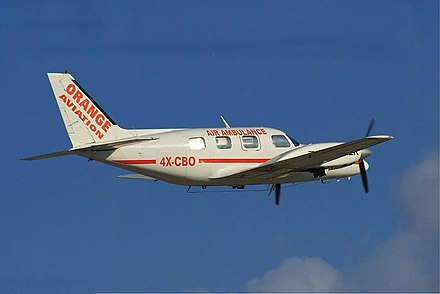
The world of aviation is vast, with many aircraft that serve as silent heroes in their niches. One such unsung hero is the Piper P Navajo. An aircraft that, despite its low profile in the mainstream, plays a pivotal role in the sectors it serves.
HISTORY
The Piper P Navajo hails from the stables of Piper Aircraft, an American manufacturer known for producing reliable general aviation aircraft. Introduced in the late 1960s, the Navajo was intended to fill the gap in Piper's lineup for a larger, twin-engine aircraft capable of carrying more passengers over longer distances.
Over its production run, the Navajo witnessed multiple modifications and improvements, constantly adapting to meet the changing demands of the aviation market.
DESIGN
Sporting a wingspan of 40.8 feet and a length of 32.7 feet, the Navajo is neither too small nor overwhelmingly large. It's a perfect middle-ground for those who want more capacity than light aircraft but without the operating costs of larger turbo props.
Designed for efficiency, it can accommodate 5-7 passengers, making it a preferred choice for small charter flights and corporate travel.
PERFORMANCE
- Top Speed: 227 knots
- Range: 1,011 nautical miles
- Service Ceiling: 26,000 feet
- Fuel Efficiency: Approximately 15 gallons per hour
Given its performance metrics, the Navajo is efficient, with a solid range for its category. It's designed to get you where you need to go without unnecessary stops or refueling.
TECHNOLOGY
The Navajo's avionics have seen upgrades over the years, with modern models being outfitted with state-of-the-art navigation and communication systems. Its propulsion system relies on two Lycoming TIO-540 engines, which are known for reliability.
Safety has always been a focus, and the Navajo comes equipped with essential safety systems that ensure a secure flight experience for both the crew and passengers.
VARIANTS
Piper Navajo boasts several variants:
- Chieftain: Extended version accommodating up to 10 passengers.
- Panther: A Navajo with modifications for better performance and handling.
- Mojave: A luxurious variant with a pressurized cabin.
Each variant serves specific niches within the aviation sector, catering to diverse needs.
OPERATORS
Though not seen in the fleets of major airlines, the Piper P Navajo is a favorite among small charter companies, corporate fleets, and private operators. Its versatility and reliability have also made it popular for aerial photography, survey flights, and air ambulance services.
CONCLUSION
The Piper P Navajo stands as a testament to the innovation and resilience of the aviation industry. Its adaptability, efficiency, and reliability make it a significant player in the annals of aviation history. Do share this post with enthusiasts and anyone keen to know more about this magnificent machine!
Piper P Navajo Specifications:
| Feature | Specification |
|---|---|
| Engines | 2x Lycoming TIO-540 |
| Wingspan | 40.8 feet |
| Length | 32.7 feet |
| Max Range | 1,011 nautical miles |
| Top Speed | 227 knots |
| Service Ceiling | 26,000 feet |
| Seating Capacity | 5-7 passengers |
| Fuel Efficiency | 15 gallons per hour |
| Weight (empty) | 4,100 lbs |
This article uses material from various web resources and Wikipedia article, released under the Creative Commons Attribution-Share-Alike License 3.0.

